AND THOREAU ADVISED…
Biochar vs. Wood Chips
People are funny. Take, for instance, a fellow gardener who, a couple of months ago, shared with me her excitement about a biochar workshop she had attended. “I can’t wait to get back into my garden and start making and using biochar,” she said.
Biochar, one of gardening’s relatively new wunderkind, is what remains after you burn wood with insufficient air. It’s charcoal. Stirred into the soil, its myriad nooks and crannies provide an expansive adsorptive surface for microbes and chemicals, natural and otherwise. Biochar, being black, darkens the soil, and dark soil is generally associated with fertility, although that’s not always the case. Because biochar is mostly elementary carbon, it resists microbial decomposition, so it’s carbon is less apt to end up in the atmosphere as carbon dioxide.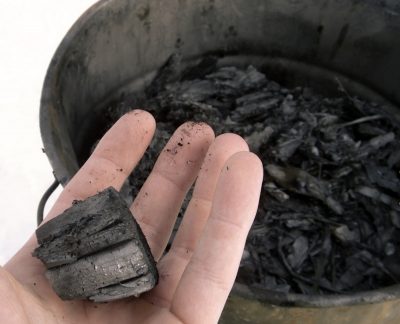
In contrast, when raw wood — wood chips or sawdust, as examples — are added to soil, it feeds microbes and then plants as it decomposes, eventually turning to organic matter, sometimes called humus. Humus is a witch’s brew of compounds with beneficial effects on soil’s nutritional, biological, and physical properties. So is cooking up a batch of biochar and digging it into your soil better for the soil and really worth the effort?
Biochar and raw wood have similar benefits in soil. Raw wood, though, has the benefit of feeding soil life. If I had a pound of wood, I contend it would be more beneficial to the soil and, in turn, plants if ground up and applied to the soil rather than being converted to biochar before being added to the soil. (A new book, The Woodchip Handbook: A Complete Guide for Farmers, Gardeners and Landscapers, by Ben Raskin provides lots of information about wood chips and their use.)
Elegant and Simple
Thoreau wrote, “Simplify, simplify.” Sometimes people are funny; they want to complicate, complicate. Something about using some apparatus, whether it’s a biochar burner or a compost tea aerator, or a measuring device, such as the refractometers used by nutrient dense farmers, draws people in. People are wowed by numbers, dials, and other bells and whistles of science.
Bells and whistles do not science make. Or good gardening. Some of the most elegant experiments in the science of gardening involved not much more than a human mind and close observation of plants. In the 19th century, some pea seeds were just about all that Gregor Mendel needed to discover heritable traits in plants; these discoveries became the foundation of modern genetics.
Ninety percent of good gardening could be summed up in two words: organic matter. Enrich your soil with plenty of compost, the Cadillac of organic matter, and/or other organic materials, such as leaves, straw, and wood chips, and you’re well on the way to plants that are healthy, healthful, and productive. I wish I could offer some gimmick or catch-phrase.
And Now, Turning to Chips
Out in the field, literally, I sometimes use some hay I cut to snuggle down along my row of dwarf apple trees in fall. I like the look, a billowing, beige blanket. By the following spring, snow and rain compress it to ground level. By the following fall, it’s mostly gone. That’s okay.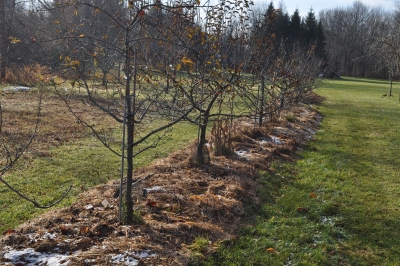
During it’s tenure, the mulch smothers weeds and insulates the soil against winter cold and summer heat. Bacteria, fungi, and other soil organisms are what make it vanish, but, as with wood chips. in so doing nutrients within those stems and leaves move into the soil for plant use and whats left behind is humus, which makes the soil dark and, in this case, is an indicator of good soil.
Some garden faddists would fault me for using hay beneath my apple trees, alleging that the trees would prefer a mulch of wood chips. The reasoning goes like this: The natural habitat of woody plants, such as apple trees, is forest, and in forest soils fungi are more prevalent than bacteria. Wood chip mulch favors fungi, mulch from herbaceous plants favor bacteria, so the correct mulch for apple trees is wood chips. QED
All this seems very solid theoretically, but greatly simplifies processes much more complex. (Sorry, Thoreau.) Without delving into possible confounding effects, I’ll just relate a couple of observations. Years ago I went to a permaculture conference where a well-known speaker was expounding the above theory to an outdoor audience seated on the lawn beneath a massive, vibrantly healthy red oak tree. Lawn grass soils are dominated by bacteria, not fungi. The other example comes from vegetable gardens; these herbaceous plants allegedly favor bacterially dominated soils, yet many gardeners’ tomatoes, lettuces, and squashes thrive with their roots beneath wood chip mulches.
Any Chips?
Depending on my mood and what’s available, I might mulch my apple trees with wood chips.  The “complicators” step in here also, admonishing me not to use just any wood chips, but those from branches less than two and a half inches across (“ramial” wood chips). The only “research” paper I could find on this topic, from some folks at Laval University, was alleged to provide evidence for benefits of ramial wood chips. I found the publication very weak on evidence and very strong on boosterism.
The “complicators” step in here also, admonishing me not to use just any wood chips, but those from branches less than two and a half inches across (“ramial” wood chips). The only “research” paper I could find on this topic, from some folks at Laval University, was alleged to provide evidence for benefits of ramial wood chips. I found the publication very weak on evidence and very strong on boosterism.
I get my wood chips delivered free by local arborists and would get laughed at if I specified to deliver only ramial wood chips.
The one potential benefit of ramial wood chips over any old wood chips is that the former, having proportionally less wood, would be higher in nitrogen. But any nitrogen deficiency of wood chips from fatter stems could be offset with some nitrogen fertilizer or manure. Or by letting a pile of wood chips age, which increases their nitrogen concentration. Or, best of all, by just laying chips on top of the ground as mulch, which allows for a slow tie-up and then release of nitrogen at the interface of the mulch and the soil. My blueberries provide a good demonstration of this, growing and bearing very well and exuding health despite the fact that I haven’t fertilized them for years.
Depending on availability, I’ll sometimes use wood chips as mulch, and when I do, I’ll use any kind. And more generally, I’ll use hay, wood chips, or any other organic mulch I can get my hands on. Simplify, simplify.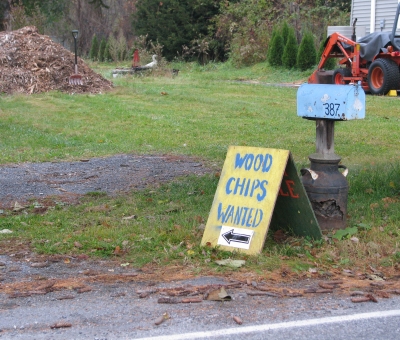


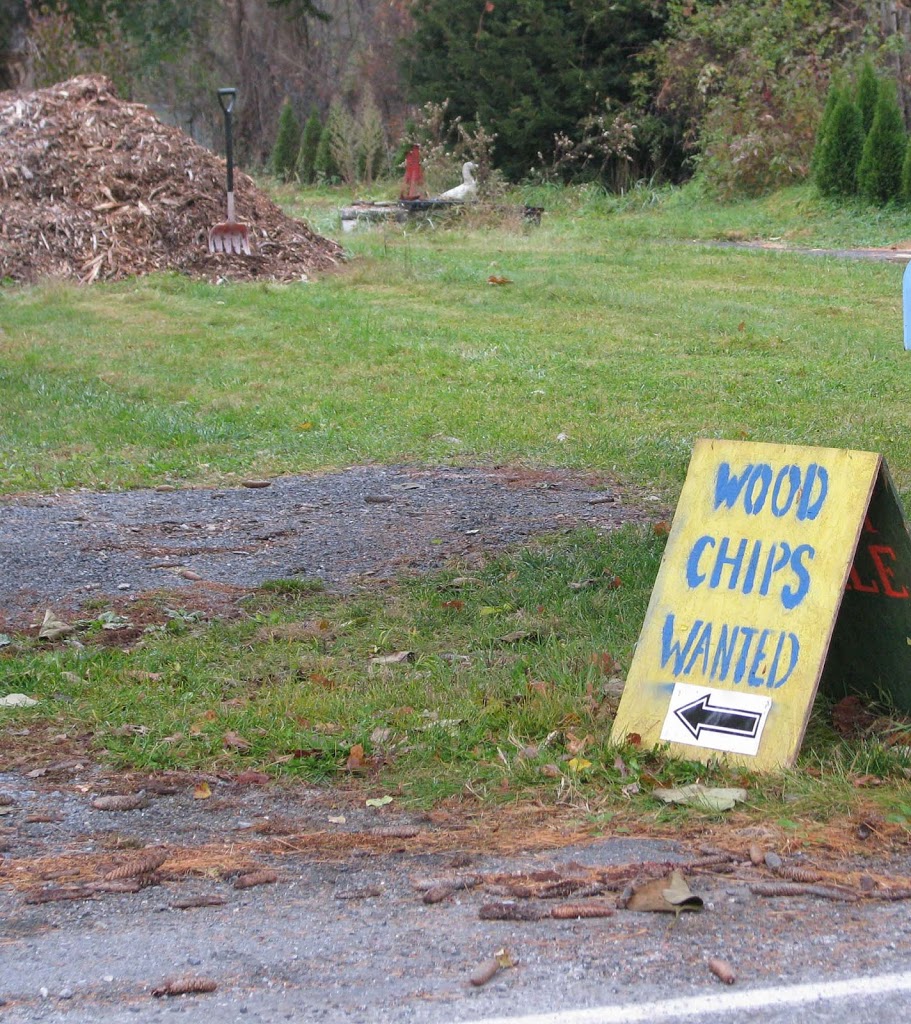
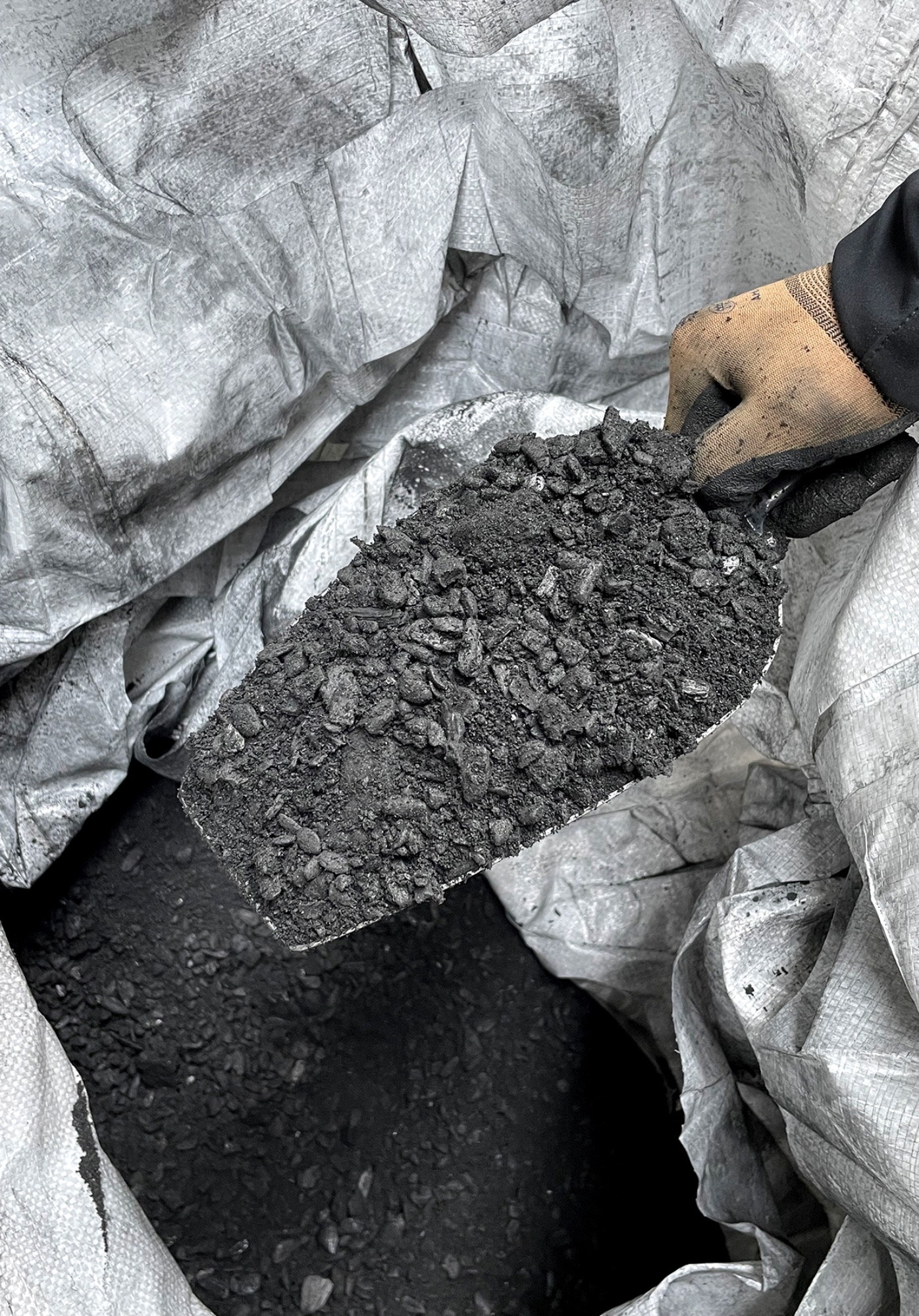


Lee, thanks for your sensible un-sensationalist contributions!
I second that!
Thanks for your reference to simplicity! I totally agree with your evaluation of the biochar craze. I am excited about biochar, because it does not break down quickly like wood chips do, and as a result, lightens the soil and improves drainage. Also, We have Lots of branches that I enjoy burning in 55 gallon barrels with lids, using the whitlox method, demonstrated on youtube https://www.youtube.com/watch?v=bNOiVCpRWXw. After many batches, I had two barrels bulge inward from the vacuum created as the hot coals cooled. Maybe the lid should have a small hole to prevent this. I feel empowered to be able to manage the wood debris for little cost, and create biochar as a beneficial side effect!
I then add compost and moisture to the charcoal, and let it age at least 30 days, to activate the biochar. I do not have scientific proof that it helps, but I am keeping organic matter on the property, and hope it will not hurt. The soil here in Cedar City, Utah tends to be alkaline and salty. I hope the biochar is better than wood ash, which is alkaline.
Biochar should be pretty much neutral PH
I have used sawmill chips to mulch my perennial border for 30 years. It is weed free and thriving. A few outspoken garden neighbors in the first year told me I would kill my garden. A few years later they stopped by to say how beautiful my perennial bed was.
Old ideas take a long time to peter out.
Thank you.